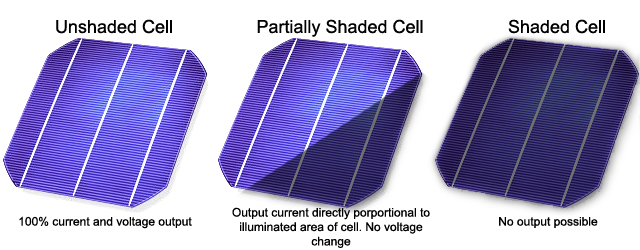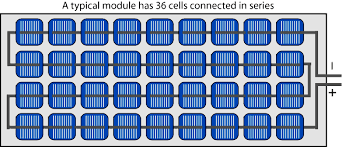Phone: (301) 352-5738
Email: info@CoastalClimateControl.com
Office | Warehouse:
1598 Whitehall Road, Suite D
Annapolis, Maryland 21409
Be wary of solar panels with multiple circuits!
While the claim may be that this type of panel has superior shade resistance, the results can be very different.

FACT: The smaller the cell size, the less shading it requires to be 100% shaded. The same amount of shade that completely covers a small cell might only cover ¼ of a larger cell. Larger cells are better for shade resistance.
FACT: If just one cell is 100% hard shaded, the output from that series string of cells will be zero, or close to zero.
FACT: Silicon solar cells consume power as well as produce power. If a cell is shaded, it will consume power from the other cells in the series string, resulting in diminished output and heating up of the shaded cell.
FACT: If several series strings of cells are connected in parallel without the installation of blocking diodes, the power from good strings will feed into a shaded string resulting in diminished panel output and the chance of cells burning.
FACT: Blocking diodes prevent back-feeding in parallel circuits, but reduce voltage output by 0.7v.
FACT: By-Pass diodes prevent cell burning ("Hot-spots") and do not consume any power or diminish panel output.
FACT: The more cells and electrical connections there are on a panel, the more output-reducing series and shunt resistance the panel will exhibit, and the more chance of a connection failure, particularly if the panel is flexed.

For best results, look for a panel with large, high efficiency cells, in one series string, with by-pass diodes protecting any string of 50w or greater.

Blocking diodes must be installed on circuits or panels connected in parallel.
By accepting you will be accessing a service provided by a third-party external to https://coastalclimatecontrol.com/






